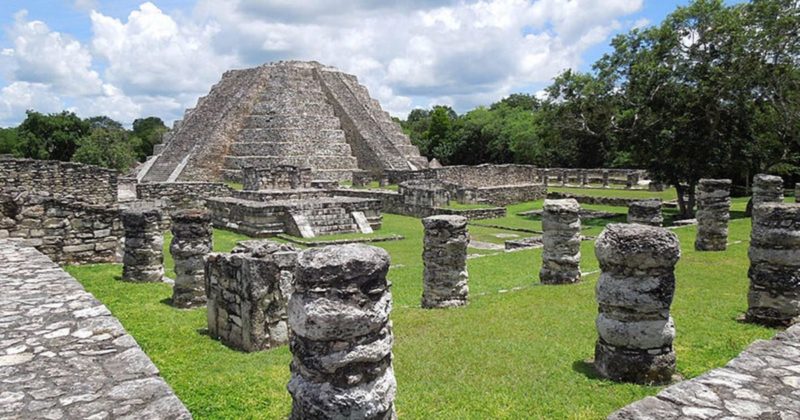Introducing Mayapán
The Mayapán Archaeological Zone is located south of the city of Mérida in the Yucatan Peninsula of Mexico. The site is not widely visited, but is open to the public for a small fee. It is historically important because it was the last big Mayan civilization thriving before the arrival of the Spanish. It was founded about 1000 AD and was part of an alliance with Chichen Itza and Uxmal before Mayapán overcame its allies and emerged as the sole ruler of the region. It was the cultural and political capital of the Yucatan during this time period, the end of the Post-Classical period, but was ultimately overthrown itself. A revolt was organized about 1440, and the ruling family was killed, and Mayapán was sacked, burned, and abandoned.
The four square kilometer city itself had an estimated 12,000 – 17,000 inhabitants, and was unique in that it was surrounded by walls. It is compared to Chichen Itza, but on a less grand scale. This plus the existence of the wall indicates a greater interest in warfare among Mayapán’s rulers.
The Park
The Mayapán Archeological Zone is a four square kilometer area enclosed within a massive wall and the surrounding area as well. There are 4000 structures within the wall, but it is centered on a central plaza on which some of the buildings have been reconstructed, including a large pyramid and an observatory. It is an active archeological site, and scientists are at work excavating and rebuilding the city.
The smallish, well-maintained park is open 8 a.m. to 5 p.m. daily and a small entrance fee is charged. Parking is provided as well as restrooms, but not food. It is not a busy park. There are few tourists because it is not served by the numerous tour buses seen at the larger sites such as Uxmal and Chichen Itza. Allow 1 – 2 hours.
Major Attractions
Some believe that the limestone used in Mayapán’s construction was inferior to that used in other sites, and the workmanship as well. For this reason, and because of possible political reasons, the buildings at Mayapán are not equal in size or quality to those at Chichen Itza, for example. Some of the buildings seem to be patterned after those of Chichen Itza, especially the large pyramid “El Castillo,”and the round building “El Caracol.”
The ceremonial center is a group of temples, colonnaded halls, shrines, altars and platforms. This main square was bordered by government, administrative and religious buildings, as well as the homes of the rulers. The grounds contain scattered statues and numerous decaying stepped pyramids, and also colorful painted murals and stucco reliefs.
The site is surrounded by a nine kilometer stone wall with twelve gates including some with vaulted entrances. Mayapán has no ballcourts.
The large residential areas of the site are made up of dwellings and associated domestic structures. The houses are often arranged in small patio groups surrounding small courtyards. There are many cenotes (limestone sinkholes filled with water) in the residential areas of the site.
How to Get There
First of all don’t confuse the Mayapán Archeological Zone with the town of Mayapán. They are two different locations. The Mayapán ruins are located a few miles south of the town of Telchaquillo, about 25 miles south of Mérida and about 60 miles west of Chichen Itza.
Tours do not go to Mayapán, so you will have to get there yourself. Rent a car or take a taxi. Telchaquillo is located on the two-lane highway 18, and the ruins site is well marked a short distance south of Telchaquillo.
Round-trip second-class bus service is available from the Noreste station in Mérida. Again, be sure you get on a bus to the ruins, not the town. They are far apart.
Bring water and snacks, and protection from the sun. It will be hot year round.







Leave A Comment